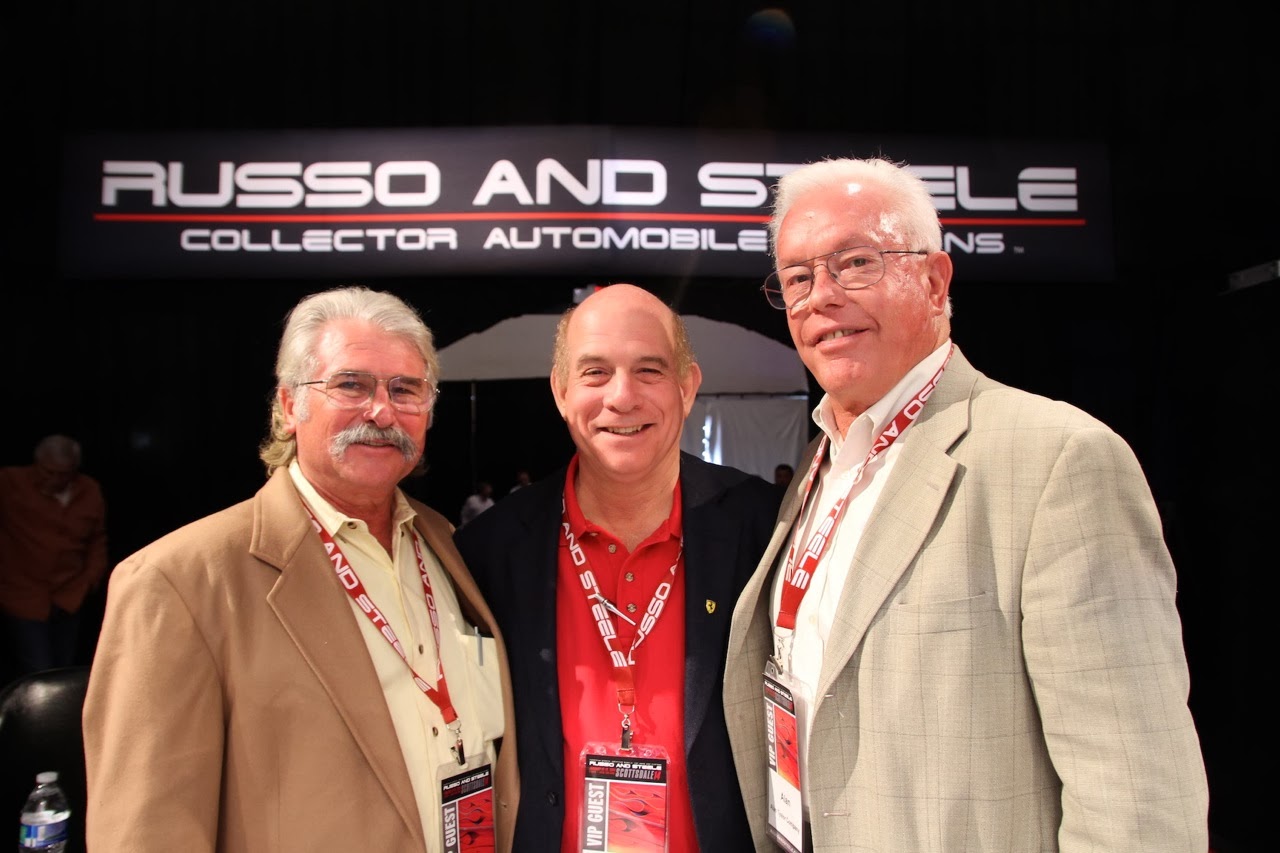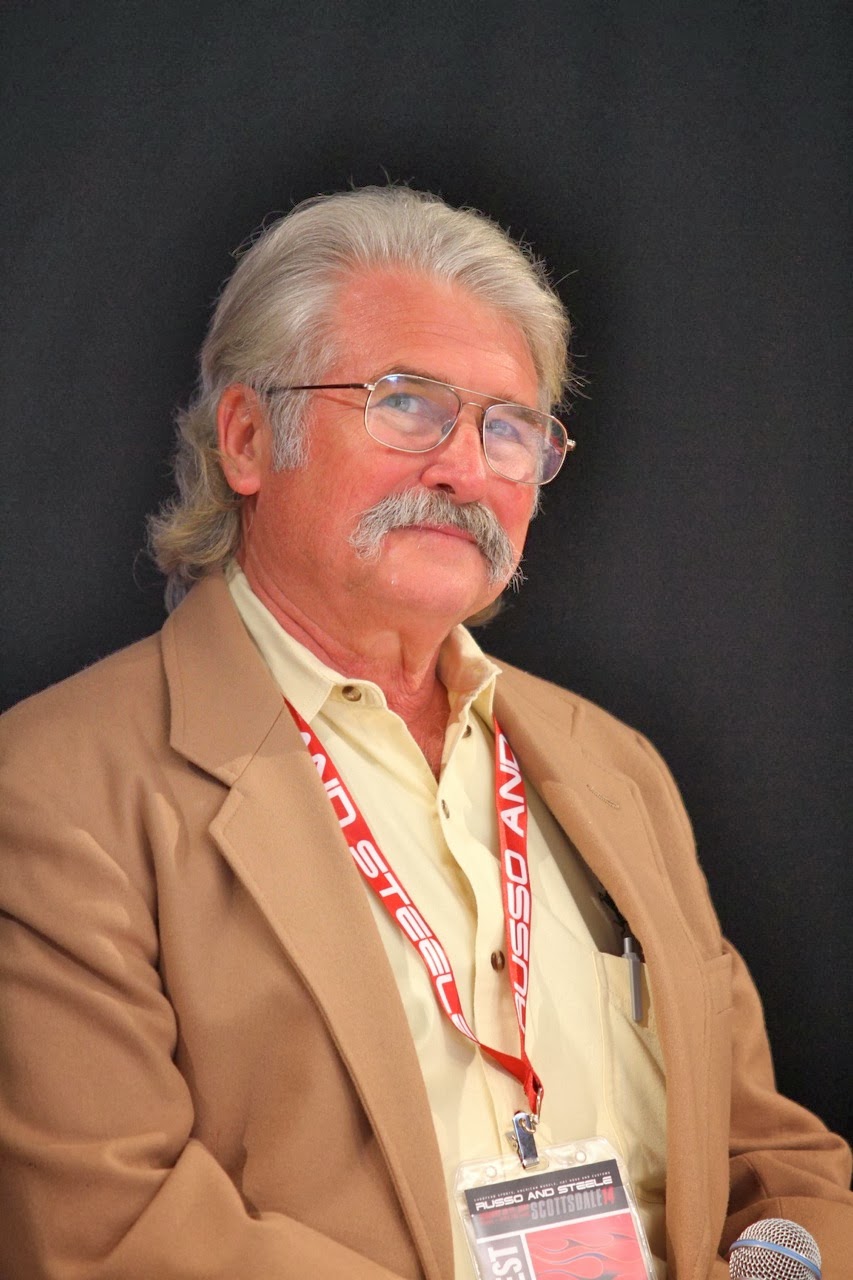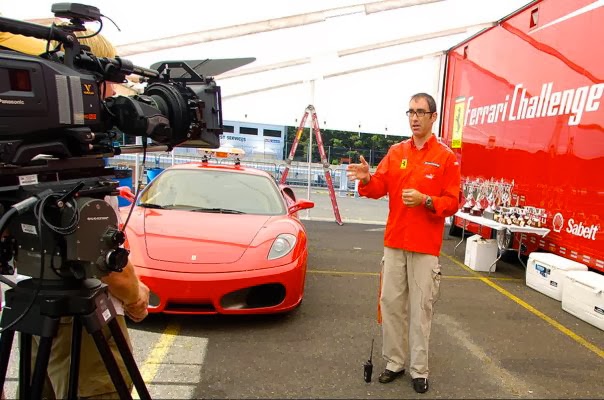To that end, Jim Resnick attended the Russo and Steele Auctions hosted The Art of Vintage Restoration seminar during Arizona Auction Week with three noted experts, above, L to R: Bobby Smith, classic Ferrari specialist; Alan Taylor, on pre-war collectible cars; Lance Coren, official appraiser for Ferrari North America and the Indianapolis Motor Speedway. Russo and Steele’s Drew Alcazar, below, served as moderator.
“The most common mistake I see is that customers don’t have a complete game plan at the outset,” said Coren. “That game plan should describe what you want to do with the car. Do you intend to show it at certified shows for points? That means the restoration needs to be done as more of an art piece for correctness than anything else and is a very
different process with different materials and hours
than for a car being primarily driven, rallied
or having the family pile in for road trips.”
Having a total game plan prevents mission creep.
“Approach a restoration as a labor of love because there’s only a small chance you’ll recoup the cost,” added Alan Taylor.
Once you’ve defined your game plan, the shop you choose should agree to that plan and neither of you should deviate from it. Both parties must agree to the approximate cost and the time frame. All other details about the restoration follow that lead of overall goal and become secondary to the game plan.
Deciding on what shop to use becomes your next big question. The experts agree that you must first do your due diligence.
“Talk to previous customers, ask around at events. Simply do the research on the shop for the type of work you’re thinking about,” said Coren.
“When I visit a shop,” Smith, right, said, “I look for three things. First, I look in the trash. If I see lots of wasted scrap metal or beer cans or materials in the garbage that really seem odd, that tells me something. Second, does the shop have the proper equipment for the type of work you’re considering? Lastly, I look for a system of parts tracking and packaging that’s organized and clearly labeled.
“You can also inspect projects in the shop. I believe in finding a shop that specializes in your type or brand of car. If you’ve got a ‘64 Pontiac GTO, don’t go to a shop that specializes in 1950s and 1960s Ferraris. They won’t know your car.”
When it comes to cost, you must be realistic.
Alan Taylor: “In today’s economy everyone should approach a restoration as a labor of love because there’s only a small chance you’ll recoup the cost upon selling the car.”
Coren agreed: “Are you in this for profit or heart? If your answer is profit, you’ll have little chance of success. If your answer is for the love of the car, the people and for the history, there’s no better hobby.”
Photos by Jim Resnick.
About the Author:
Jim Resnick, right, began his career as a writer, reporter and photographer for magazines including Vette, Hot Rod, Chevy High Performance and Car Craft. In 1996, he launched Bimmer Magazine as its editor-in-chief. He also was technical editor of Sports Car International. Later, he did public relations and marketing for Mercedes-Benz, Ferrari and
Jaguar Land Rover, and thus brings a unique perspective to his reporting and writing.
He is a “recovering” racer and guitarist.




